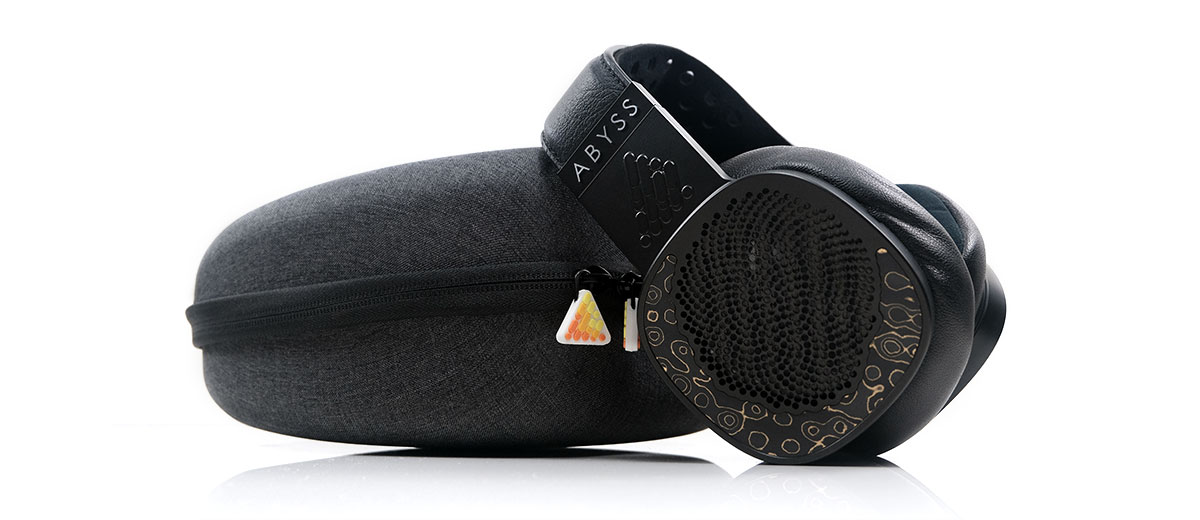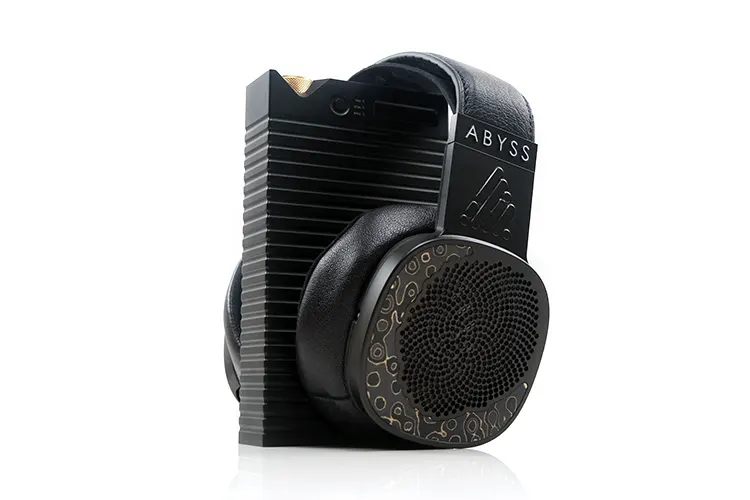Sound Impressions
The following sound impressions of the ABYSS Diana DZ were completed using a mix of the dCS Lina Clock, Network DAC, and Headphone amplifier in balanced mode as well as the Cayin HA-300MK2 with the Holo Audio Spring DAC.
Summary
The Diana DZ is deeper and more holographic sounding than the TC, with improved height and width and some of the best channel separation I have heard to date from a set of Diana series headphones.
Tonally, the Diana DZ is fairly neutral though not overly analytical. There is a small amount of warmth in its undertones with a sparkling set of highs that do not bleed too much into the mids timbre. It’s a very clean and pure sound that can soften slightly and lean more to the euphonic side with a good tube amplifier.
The normative for the last few models has been a stronger midrange emphasis with a linear (TC) or warm bass response (MR) and some energy in the lower to mid-treble. You get incredible resolution and speed from the right setup but it was more centered and intimate than the DZ.
ABYSS has dialed back the 1-3k midrange emphasis relative to the MR and TC tuning to create a stronger perception of space. Not just flat wide space either, but deep and immersive space that adds an improved level of immersion to the presentation. In short, a big-sounding small set of headphones.
I will preface that statement by describing the Diana DZ as a transparent set of headphones. How much and how deep that soundstage goes will depend largely on what you connect it to.
Portable gear might struggle to reproduce the same dynamic range and headroom. Stellar gear like the iBasso DX320 MAX Ti and the ONIX Mystic XP1 struggled on headroom with the DZ.
Only when the XP1 was hooked up to its M-Power AC mode did I get a proper sense of scale from the Diana DZ. This headphone should be paired with a resolving desktop amplifier with good power.
Frequency Response
There have been a few changes in the FR of the Diana DZ compared to the TC, some of which are not so apparent from just reading the measurements alone.
The most obvious difference is the reduction of the TC’s mids emphasis around the 3k marker and shifting the start of the ear gain in the DZ a little lower around the 1k marker to produce a more relaxed but evenly balanced midrange shelf from 1-3k.
That’s where the perception of Diana DZ’s improved space is at its strongest and also where the staging quality is at its deepest.
The 3-5k region still drops a little but does not seem as heavy a dip as the TC, offering more instrument and detail fill in this region, and enhancing the DZ’s imaging and layering over the TC considerably.
There is still a secondary lower treble 6-8k peak just slightly below the Diana DZ’s midrange gain for amplitude but the emphasis is pitched up slightly from the TC close to the 8k region at its strongest with slightly less 10k emphasis.
That gives the Diana DZ its sparkle and headroom but without much in the way of sibilance bleeding down into the mids. It also contributes to its sense of staging height and air through the upper mids. More so than the TC which tended to place greater emphasis on vocal presence with everything just tucking in slightly behind.
I find the Diana DZ bass response more linear than the TC, particularly around the mid-bass response where the TC had a tiny bit more bloom and presence but less sub-bass amplitude below 50Hz than the DZ.
One final subtle change is the lower-mids which sound a little dipped in presence on the TC compared to the Diana DZ’s stronger elevation.
Staging & Dynamics
This is the DZ’s calling card and where the improvements are most felt over the older TC and MR. The Diana DZ soundstage is deeper, wider, and taller with a very clean and precise imaging experience.
Not just deep as in more sub-bass presence (of which there is) but in terms of how holographic it sounds, particularly through the mids where the vocal emphasis is dropped slightly to enhance the perceived distance.
Dropping the vocal imaging allows the background to come into focus more. So, less intimacy and more width mean bands sound like complete bands on the stage, not just vocalists with instruments behind and in support.
Power and the type of amplifier will also tweak that presentation. I found portable gear to create a relatively shrunken experience in terms of dynamic range. The background was never quite as spacious as I wanted it to be until I moved to desktop gear with more power.
Even then the mix and match of amplification gave me something different with the Diana DZ. The most holographic were the dCS Lina stack and the Cayin HA-300MK2.
The Cayin gave me the width, staging depth, and height with more bloom on the mid and upper bass. The Lina created the most open midrange of the setups with the best staging depth and punchiest set of lows.
The DZ’s transparency allows amplification to have the final say in the quality and shape of the soundstage you will hear.
Synergy
Sensitivity & Efficiency
The ABYSS Diana DZ is rated at 50Ω and 92 dB/mW @1kHz, making driving easier than the 69Ω rated TC but less efficient than the 30Ω rated MR.
The outlier is the now-discontinued Diana Phi which measured 32Ω with an SPL of 91 dB/mw @1kHz. There is a small gap between it and the Diana DZ for volume with the Phi a little bit easier to drive.
The Diana DZ is not an efficient headphone but it’s not at Susvara’s level of inefficiency. Still, I would recommend a quality amplifier to get the best out of the Diana DZ whereas the MR is happy enough with a quality portable amp or DAP with good power.
Examples include the ONIX Mystic XP1 and the iBasso DX320 MAX Ti, two very capable portable devices. The MAX Ti is rated at around 750mW into a 50Ω load and the Mystic XP 1 is slightly lower.
In balanced high gain mode, both devices do not have enough headroom to drive the Diana DZ comfortably without it starting to sound shouty and thin.
It was only when I plugged the Mystic XP1 into its accompanying AC power brick and turned on its M-Power mode did the DZ suddenly delivered the necessary weight and headroom to sound like it was being driven quite well.
M-Power provides up to 1.5W of power at 50Ω which is closer to where the DZ should be but bear in mind the Mystic XP1 becomes a desktop amplifier in the process.
If you need portable power without a power cable the best I can suggest is the Cayin C9 which will give you 1.6W into a 50Ω going balanced plus a few tonal tweaks to fine-tune the Diana DZ which is a plus in my book.
Desktop Pairings
I tested 4 excellent amplifiers backed by some of my preferred DACs including the dCS Lina stack, the Bartok Apex, Cayin’s HA-300MK2, and the Ferrum OOR. DACs included the WANDLA GSE and the Holo Audio Spring 2.
From this testing I found myself looking for either maximum midrange resolution and clarity or something smooth and expansive.
For the former, the Lina stack/Diana DZ pairing provided outstanding dynamic range and clarity with a surprisingly natural tone for such a neutral setup, more refined than the OOR/WANDLA pairing with its tube and spatial modes turned on.
However, I must add that this is only with the Lina Clock attached to the Lina Network DAC. Without it, I found the performance a bit flatter and closer to the OOR/WANDLA GSE performance which is quite neutral in its delivery.
If there is a non-Clock advantage to the Lina/Diana DZ pairing it is channel separation and width but this is very much magnified with a more holographic performance from the DZ with the Clock.
The Cayin HA-300MK2 combined with the Holo Audio Spring 2 DAC brings a much smoother more euphonic sound to the Diana DZ performance.
It also injects some beautiful staging depth and width. It’s not as precise as the Lina, perhaps not as resolving but tonally it’s the smoothest of the bunch and the first time I enjoyed an Abyss headphone with this amplifier.
The Bartok Apex sat between the Lina and the Cayin amplifier with additional bass warmth on the DZ lows and a smooth vocal timbre. Adding the Lina Clock increased the DZ’s staging depth and also introduced an enhanced holographic dimension.




